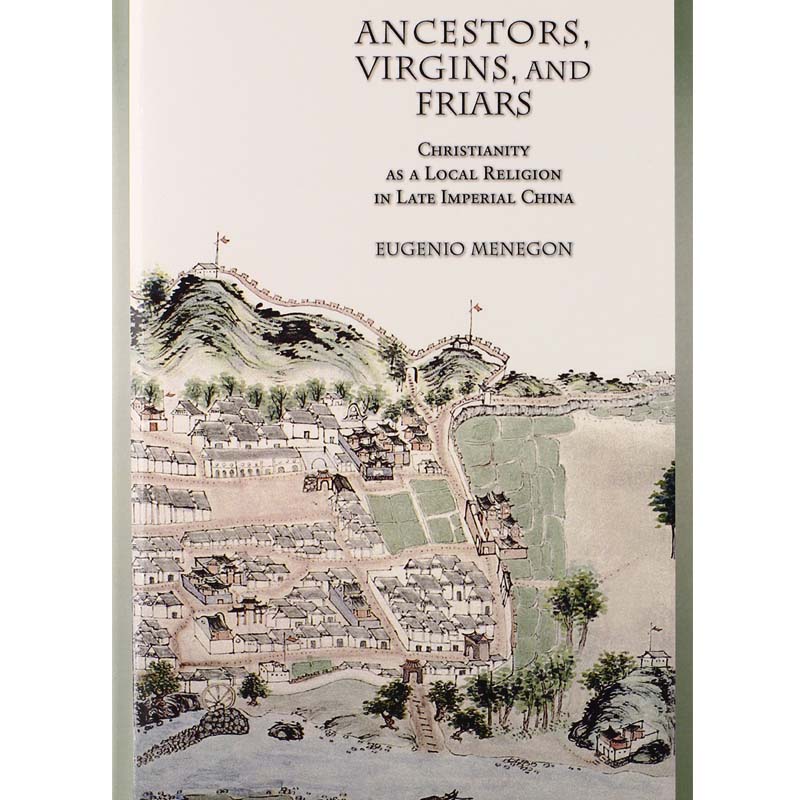T ulay’s May 24-June 20, 2016 issue featured the first Catholic bishop of China, Luo Wenzao (羅文藻, 1615-1691) or Gregorio Lopez, who visited Manila five times between 1638 and 1684 and had studied theology at the University of Santo Tomas. Luo is the first Chinese Catholic of China trained in the Philippines.
But Luo, who was from a 400-year-old Catholic community in Fu’an (福安) county in Fujian province, was not the only prominent Catholic Chinese who visited and lived for sometime in the country during that period. So did his town mate, Joaquin Guo Bangyong (郭邦雍 ca. 1582-1649), according to Ancestors, Virgins and Friars: Christianity as a Local Religion in Later Imperial China by Eugenio Menegon (2009).
“Guo Bangyong is the first Chinese literatus to have lived for a prolonged period inside a Christian environment outside China and to have received a thoroughly Christian education in a priory,” Menegon said.
Both Guo and Luo, indeed, made history. Born around 1582 in Ludou (鹿斗) ward to “very honorable parents,” Guo was “an excellent student of Chinese letters” in Fu’an Confucius School. He was a “stipend student” or linsheng (廪生), receiving special government emolument to cover his study and travel expenses, and was certified as best qualified in his county to participate in the provincial examinations.
It was during the examinations in Fuzhou (福州), the provincial capital of Fujian, that Guo met Giulin Aleni, SJ, and received baptism. After conversion, he decided to take back to Fu’an “a great number of Christian books.” On his way back he saved his travel allowance and spent it on having the Christian books carved on woodblocks so they could be reprinted.
During the first period of Dominican presence in Fu’an, Guo became the “feet and hands” of Italian priest Angelo Cocchi, OP. He taught the priest the Chinese language and helped him in catechizing, so much so that Guo can be called the founder of the Christian community of Fu’an. He threw himself with great energy into the new enterprise and was instrumental in successfully settling the first mission.
But Guo was already 45 at the time and probably realized that a person his age had little hope of earning the coveted juren (舉人) degree for which he had been studying for so long. His hopes for an official career were shattered 10 years later when the country magistrate stripped him of the linsheng status for following his new credo and protecting the missionaries during the first serious anti-Christian disturbances in Fu’an.
This event was a turning point in Guo’s life. “Already in his mid-50s, a widower and active Christian for a decade, he decided to forsake the bureaucratic path to worldly success and instead follow the Dominican priests in exile to the Philippines,” Menegon said.
Between 1638 and 1641, Guo resided in one of the Dominican parishes in Bataan, where he worked with the Dominicans on the compilation of a Chinese grammar book and a Chinese dictionary.
During his stay in the Philippines, Guo “complied with all the religious duties of the friars, as if he were one of them. He woke up with them at midnight from (the early morning prayers) of the matins, engaged in meditation at the prescribed times, took corporal disciplines, slept on bare wooden boards and followed the Order’s calendar of fasting, without ever eating meat.”
His religious experience and prolonged retreat made him an excellent ally and companion of the missionaries for their comeback to China to continue the interrupted work.
After a brief novitiate in Manila, Guo became a member of the lay branch of the Dominicans, the Third Order. In 1642 he helped the missionaries return to Fu’an, where, “thanks to the influence that his age and status exerted, he helped restore the spirit of Fu’an’s Christians, who had been battered by the 1637 campaign.”
Luo and Guo also had the opportunity to work together. “Luo joined other friars in Dingtou (頂頭), a coastal village near Fu’an, where he collaborated with the prominent local convert Guo Bangyong in building a large stone church in Baroque style,” according to the article “Luo Wenzao: Product of the Philippines – the first bishop of China.”
Like Bishop Luo Wenzao, Guo Bangyong can also be called a product of the Philippines, having lived a friar’s life for four straight years in the country.
From Fu’an and the Philippines hail two of the earliest Christian missionaries – a Luo and a Guo.
Categories
Guo Bangyong, missionary made in PH
